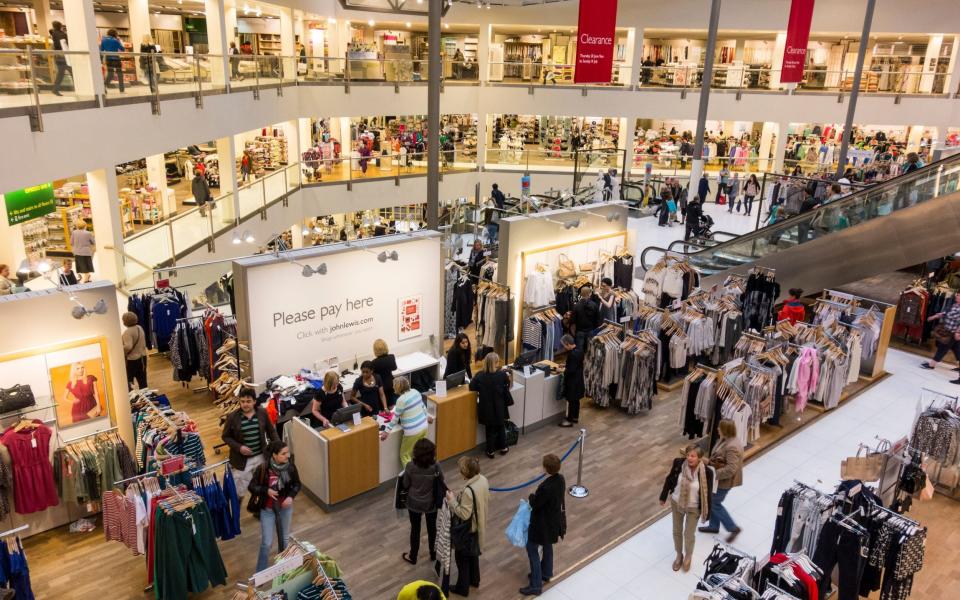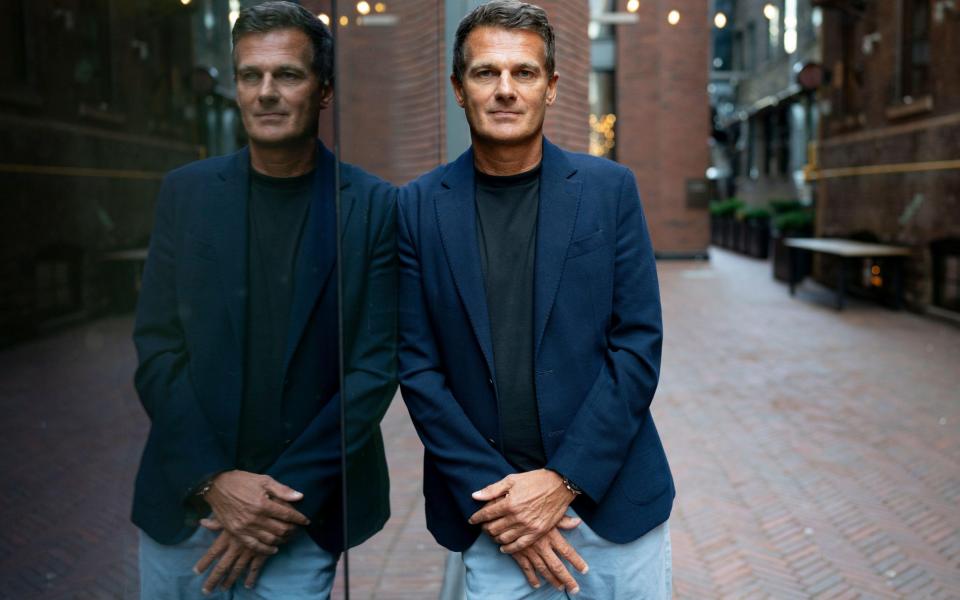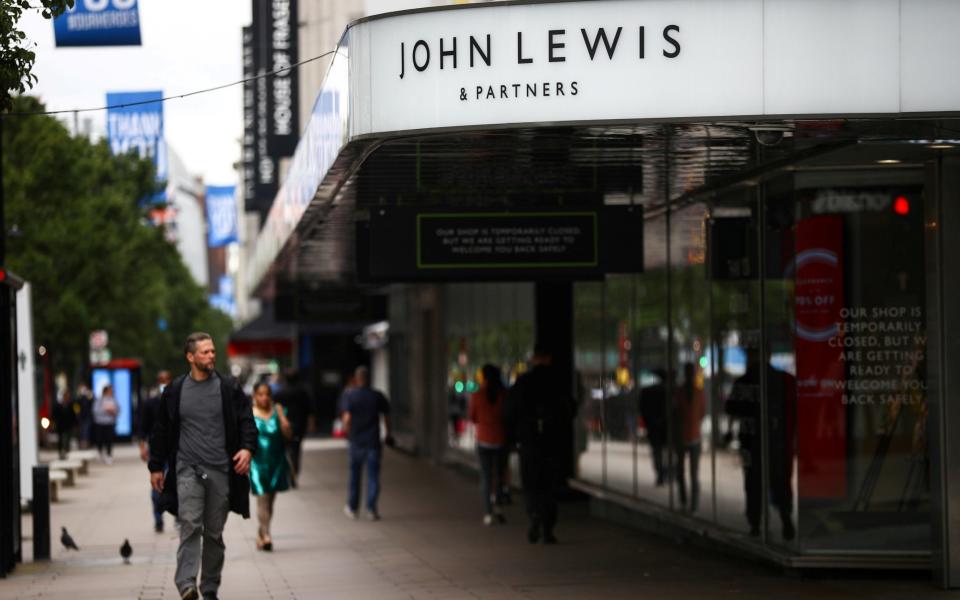John Lewis goes back to basics in bid to catch Marks & Spencer

When Nish Kankiwala laid out his new strategy for John Lewis earlier this year, he was careful not to criticise decisions made by his chairman, Dame Sharon White.
The truth was “we didn’t really deliver” under earlier turnaround plans, the partnership chief executive told staff, without explicitly naming the architect of those earlier plans.
Performance across John Lewis and Waitrose stores just “wasn’t strong enough”, Kankiwala said in a video sent to staff viewed by The Telegraph.
“Therefore, we’ve not been able to invest in our partners and invest in our business.”
Kankiwala, a former Hovis and Burger King executive, was brought in to right the ship at John Lewis a year ago after a string of loss-making years.
His solution has been to go back to basics. Rather than racing to diversify into new areas such as housing and financial services – core to Dame Sharon’s goal of generating 40pc of profits from outside retail by 2030 – John Lewis would instead refocus on what it does best: selling things.
“Fundamentally, we’re going to laser-focus on retail,” Kankiwala told staff. “We’re going to be a brilliant retailer… It is so critical that we’re going to focus on that.”

The recent revival of M&S has provided inspiration. One insider says: “I know this turnaround can be done because M&S have done it.”
Richard Hyman, a veteran retail analyst, says: “If you look at how M&S have turned their business around, it’s about getting the style right and the price point right.”
It will also sharpen minds: if the partnership doesn’t get its act together, Marks & Spencer may soon be eating its lunch.
Kankiwala, however, is clear that John Lewis is not going to simply shadow its rival. He told staff: “We don’t want to be somebody’s lookalike. We want to do it in our way.”
The message is expected to be repeated when the John Lewis Partnership, which also owns Waitrose, reports its full year results next week. It is expected to be a cheerier update than previous ones, with a return to a profit forecast after years of losses.
Analyst Nick Bubb believes the partnership will announce a profit of £25m for the year to the end of January before exceptional costs, compared to a loss of £77.6m a year earlier. More investment into stores and staff is expected amid growing optimism among executives that they have finally found a winning formula.
“It’s not job done,” says one insider. “There are clearly hard yards ahead – but things are heading in the right direction.”
Kankiwala’s faith in retail has been well received – many John Lewis staffers believe it’s what the partnership should have been doing all along.
The return of Peter Ruis has also provided a big confidence boost. Ruis worked at John Lewis between 2005 and 2013, and was credited with making the department store fashionable again. In his years away, he held senior roles at Jigsaw and Anthropologie. He now heads up the entire department store division.
“People like Peter know their stuff,” says one former John Lewis executive. “If anyone can create a sense of excitement about the fashion assortment, it would be him.
“The reason I say that is because he’s done it before and so it’s critical that the partnership is bringing more people like him in.”

Ruis is now a few weeks into the post and is understood to be asking why John Lewis has struggled to get more shoppers to spend more on fashion and homeware, regardless of the squeeze on household budgets.
John Lewis’s share of the clothing and footwear market has remained largely flat since 2020, figures from GlobalData suggest, rising marginally from 1.9pc to 2.1pc last year.
Meanwhile, Marks & Spencer has grown from 4.2pc of the market to 5.6pc over the same period, while Next has increased its share from 5.9pc to 7.1pc last year.
The situation is worse in homeware. While John Lewis was once the go-to for middle-class homeowners looking to kit out their places, it is now losing market share. Its share of spending has shrunk from 2.9pc to 2.7pc over the last four years, GlobalData figures show.
Dunelm, meanwhile, has gone from 3.7pc to 4.8pc and Ikea from 5.6pc to 6.7pc.
Mark Price, the former boss of Waitrose, says fixing homeware is critical to reviving John Lewis.
“Where [department stores] most went wrong is in focusing on high margin fashion and beauty and abandoning home products,” he says.
“That is where John Lewis’s heritage is.”
Turning around performance within homeware will mean focusing on quality, says one former executive.
“The thing is, you should know that if John Lewis has selected 30 TVs to show you, they’re the best TVs on the market and the person who is selling them to you is an expert who can give you brilliant advice. It’s the same in linen, furniture, beds, white goods. People go there for the expertise. It’s not necessarily because it’s the best price.”
The focus on retail will likely involve reinvigorating John Lewis department stores. Its flagship Oxford Street store, which has operated in one form or another since 1864, is now somewhat tatty and in need of a refresh, nearby retailers say.

However, overhauling it would be a “huge undertaking” given the huge amount of selling space, industry figures say.
The expectation is that significant cash will have to be funnelled into the shops, although Ruis is unlikely to lay out any specific investment plans next week.
Spending money on department stores is unfashionable at best. Many would argue it’s a bad investment. Some of John Lewis’s biggest rivals have gone bust in recent years, including House of Fraser and Debenhams. They struggled to compete with online rivals.
However, John Lewis executives believe this is an opportunity, rather than a threat.
In many towns and cities up and down the UK, competition has all but evaporated. Bosses believe there is still space for at least one department store in Britain and they believe John Lewis can be that retailer.
Mark Price, the former Waitrose boss, believes it is possible to create a successful department store in the modern world, but it needs “to stay relevant to what customers need and want”.
“When I started in John Lewis in 1982 there were hairdressing salons and table service restaurants but tastes changed,” he says. “Now services look more important again to provide a different and additional physical attraction to the internet.”
With M&S on the march, partners and shoppers will be watching closely for more details of Kankiwala’s master plan.

 Yahoo Finance
Yahoo Finance 